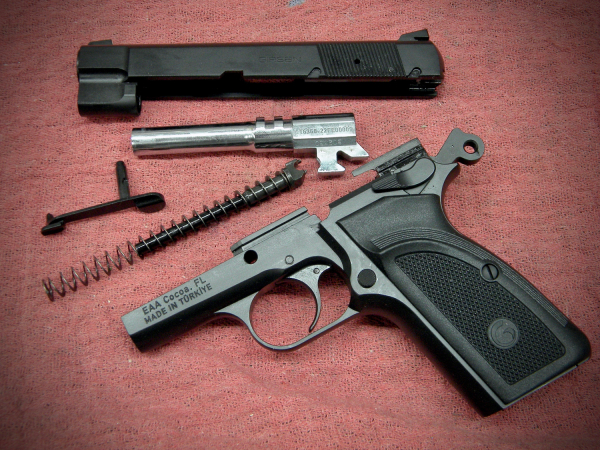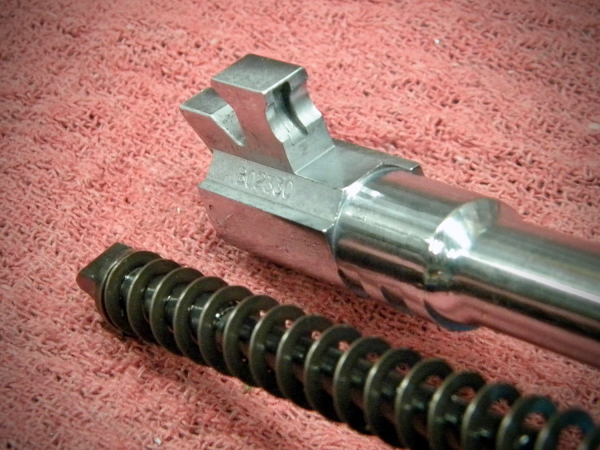Today, we’re looking at gutty works of the Girsan MC P35 “Private Investigator,” the new short barrel version of the Hi Power. There have been a variety of Hi Power clones the last few decades. These “non-FN/Browning” pistols run the gamut when it comes to how close they mirror the original design and overall quality. Obviously, you can tell a lot by examining the fit and finish of a pistol, the quality of the internals, and especially little details like pins and springs. I’m happy to say the “Private Investigator” scores high marks in all categories.

The first thing you notice is how smooth and even the pistols matte black finish has been applied; it’s one of the best I’ve seen on a Hi Power clone. The same is true for all small parts. The chrome finish on the barrel is a little bright for me, but it should hold up well, especially in hot, humid environments. Fit and function is nice as well. Hi Powers require a little looser fit between the slide and frame. The P.I.’s fit is tight, but not so tight it’s going to create a problem during high-volume firing.
The slide contains a flat, short recoil spring, as opposed the standard spring made from round wire. The guide rod is also unique. Due to shortened length, the front of the slide below the barrel has a hole for the guide rod to push through as the slide cycles, or locks to the rear. The strength of the recoil spring and rod are a little difficult to remove from the slide due to their length. But, after a few practice runs you’ll figure out the right combination of shakes and wiggles for smooth removal.

The sear lever, which transfers the movement from the trigger lever to the sear, is a late model style that blocks the firing pin from forward movement when there’s no pressure on the trigger. Should the hammer or sear fail, this feature prevents the pistol from going “full-auto.”
The pins and springs inside a pistol make the difference between an efficiently functioning pistol and one with a lot of problems. The P.I.’s springs are the proper dimensions with good tension. One sign of a properly made Hi Power is that pins for parts like the sear, sear lever, extractor and ejector shouldn’t require a lot of force to tap in and out. Plus, the pins shouldn’t deform when removed or installed, as long as you use the proper punches. All of this is true for the P.I. Everything fits and feels right.

The one thing that is different is the shape of the rear of the grip. You’ll notice this immediately if attempting to swap out the factory stocks. The factory supplied Mk III style stocks fit perfectly; they don’t wiggle or shift on the frame. Some of the aftermarket stocks I checked have some slop. This is often the case with Hi Power clones, and building up the front area of the stock on the inside, where it indexes on the frame, is easily done with a little J.B. Weld or epoxy.
The Girsan MC P35 P.I. looks good inside and out. Now, it’s time to get it on the range to check function and accuracy. I’ll have a full report on this coming up next.
Tiger McKee is director of Shootrite Firearms Academy. He is the author of The Book of Two Guns, AR-15 Skills and Drills, has a regular column in American Handgunner and makes some cool knives and custom revolvers. www.shootrite.org or visit Shootrite’s Facebook page for other details.